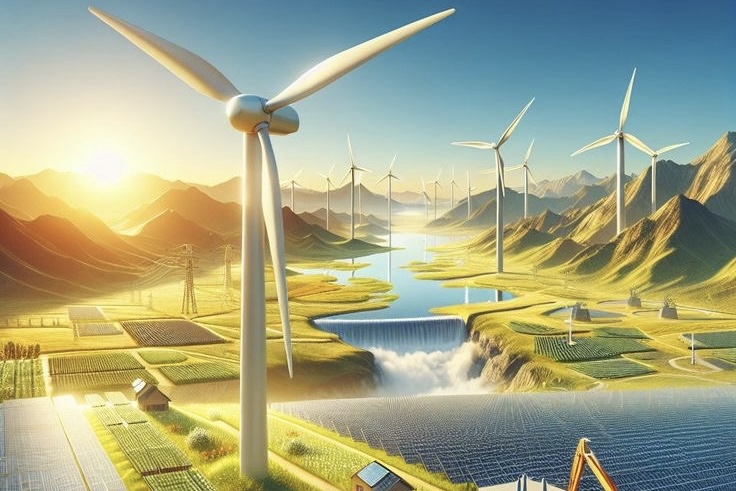Enviromental Energy: What is it?
Introduction to Green Energy
Green energy, sometimes referred to as renewable energy, is the production of fuel, heat, or electricity using environmentally friendly and sustainable resources. Green energy is created using renewable resources that are naturally replenished and do not run out over time, in contrast to conventional fossil fuels like coal, oil, and natural gas, which release damaging greenhouse gases and contribute to climate change. The development and uptake of green energy technologies have grown in significance in the global endeavor to address climate change and advance a more sustainable energy future, as worries about the environmental effects of fossil fuels continue to mount.
Types of Green Energy
Solar Energy
Solar energy is produced by employing photovoltaic cells or concentrated solar power systems to transform sunlight into electrical current. One of the green energy sources that is most frequently used is solar energy, which is also getting more and more affordable for both residential and commercial applications. Solar technology is becoming more and more popular for businesses, homes, and even large-scale utility-grade power generation as its affordability and efficiency increase.
Wind Energy
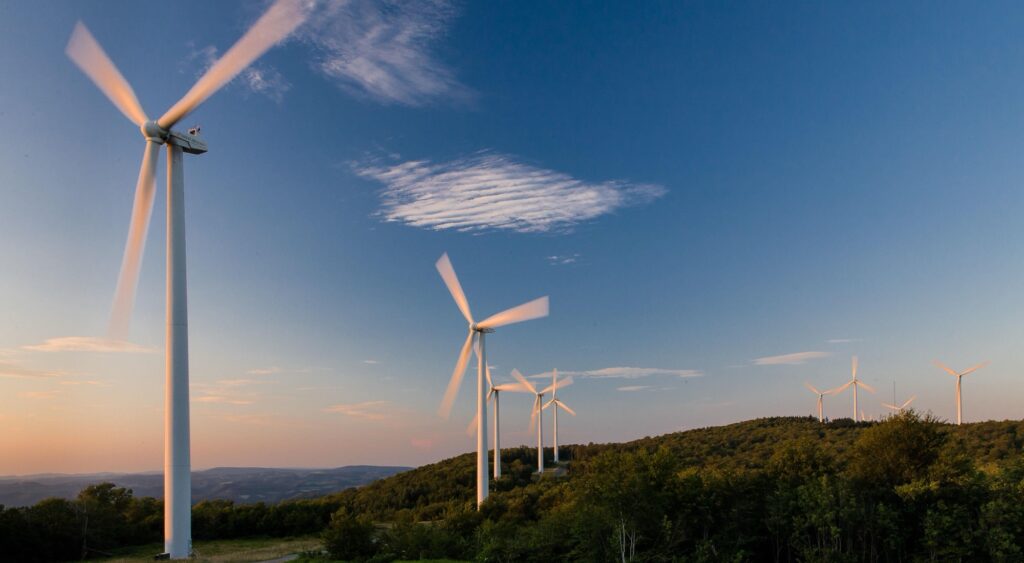
Using wind turbines, wind energy is produced by harnessing the kinetic energy of the wind. The electrical energy produced by these turbines can power buildings, commercial establishments, and the electrical grid. In regions like open plains and coastal areas that experience regular and strong wind patterns, wind energy is a particularly promising green energy source.
Hydroelectric Power
The energy of flowing water, such as that from rivers, dams, and tidal flows, is captured and used to create hydroelectric power. Turbines are spun by the water’s kinetic energy, producing electricity in the process. Many parts of the world rely on hydroelectric power, a proven green energy source that has been around for decades and offers a steady and dependable supply of electricity.
Geothermal Energy
By harnessing the heat from the Earth’s interior to create steam or hot water, which can subsequently be used to create electricity or heat buildings, geothermal energy is produced. In areas that experience high geothermal activity, like those that are seismically or volcanically active, geothermal energy is an especially valuable renewable energy source.
Bioenergy
Bioenergy is produced from organic materials like wood, municipal solid waste, and agricultural waste. Through procedures like gasification, anaerobic digestion, or combustion, these materials are transformed into energy. Bioenergy provides a way to repurpose waste materials that would otherwise be landfilled or burned. It can be used to produce heat, electricity, or fuel for transportation.
Benefits of Green Energy
Environmental Benefits
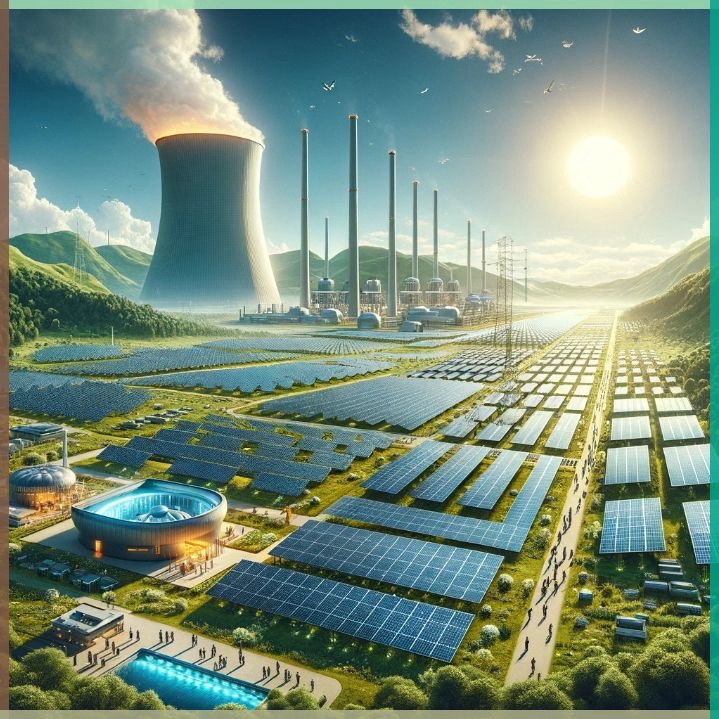
The environmental impact of green energy sources is substantially less than that of conventional fossil fuels. They emit little to no greenhouse gases, which lowers the global carbon footprint and lessens the effects of climate change. Furthermore, green energy technologies do not add to other types of pollution that affect the environment, like contamination of the air, water, or land.
Sustainability
Green energy sources can be naturally replenished and do not eventually run out because they are sustainable and renewable. In the long run, this lessens our dependency on finite and increasingly scarce fossil fuel resources by guaranteeing a steady and consistent supply of energy.
Economic Benefits
The use of green energy has resulted in lower energy costs for people and businesses due to increased energy efficiency and decreased energy bills, as well as the development of new industries and employment opportunities. Green energy is predicted to become more affordable as technology advances and grows, attracting more and more businesses and consumers to this increasingly appealing option.
Energy Security
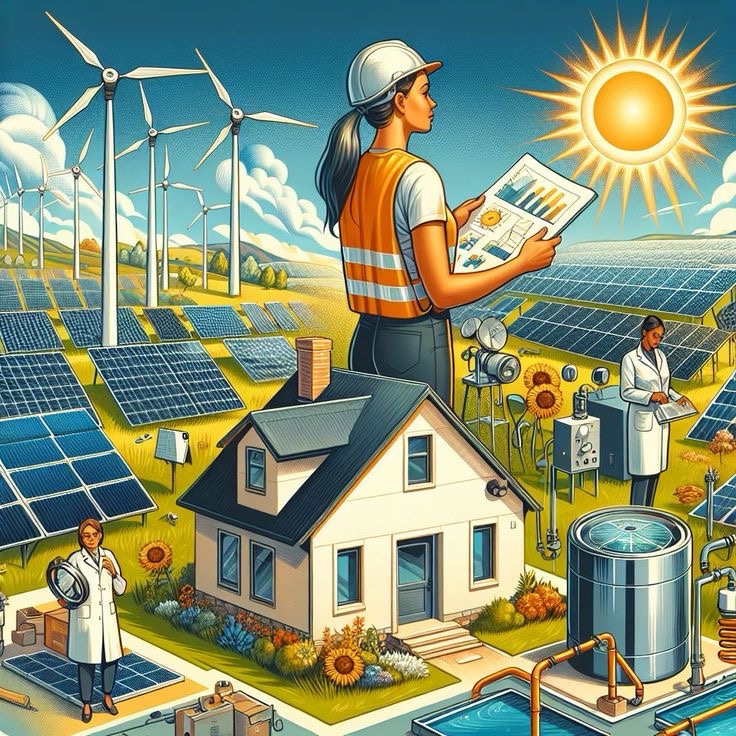
Dependence on indigenous renewable energy sources can improve a nation’s energy security by lessening its susceptibility to disruptions in the world’s fossil fuel supply chain and variations in energy prices.
Challenges and Limitations
While green energy offers numerous benefits, it also faces some challenges and limitations that must be addressed to ensure its widespread adoption and successful integration into the global energy system.
Intermittency
Many green energy sources, such as solar and wind, are intermittent, meaning their power output can fluctuate based on weather conditions and time of day. This can create challenges for maintaining a stable and reliable energy grid, as the supply of electricity must be carefully balanced with demand.
Infrastructure Costs
A green energy system’s transition frequently necessitates large short-term expenditures for new infrastructure, such as grid modernization, wind turbines, and solar panels. Adoption may be hampered by this, especially in areas with established fossil fuel-based energy systems or little financial resources.
Scalability
It can be difficult to scale up the production of green energy to meet the rising demand for electricity worldwide because not all places have access to the necessary infrastructure and resources. It will take coordinated national and international efforts, more funding, and ongoing technological advancements to overcome this obstacle.
Storage and Transmission Challenges
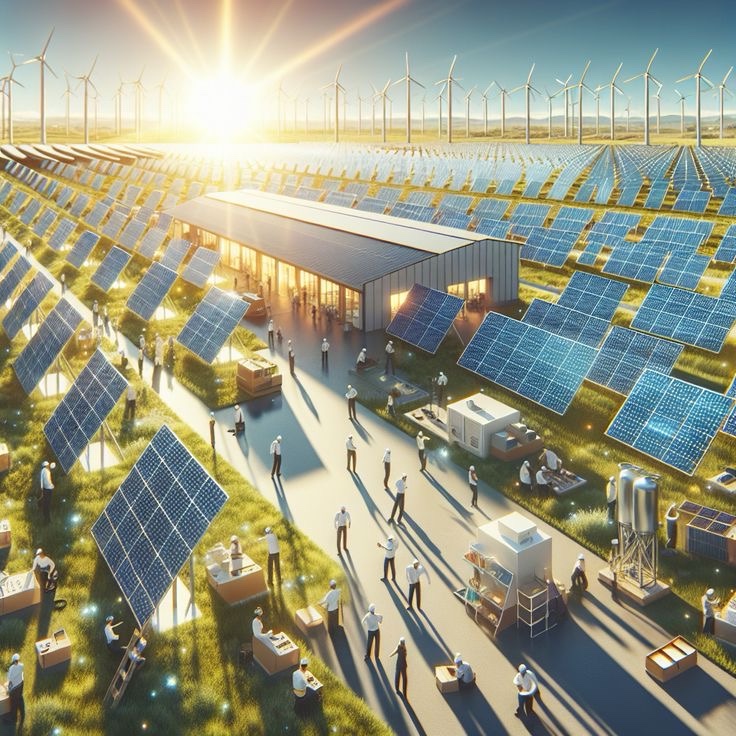
Energy transmission and storage may face difficulties due to the sporadic nature of many renewable energy sources. The widespread adoption of green energy will depend on the development of efficient and reasonably priced energy storage technologies as well as the modernization of the electrical grid to allow the integration of renewable energy sources.
Conclusion
Green energy represents a vital shift towards a more sustainable and environmentally-friendly energy future. By diversifying our energy sources and harnessing the power of renewable resources, we can reduce our reliance on fossil fuels, mitigate the effects of climate change, and create a more sustainable and resilient energy system for generations to come. Green energy is an essential part of the global effort to address the urgent issue of climate change and guarantee a sustainable energy future for all, even though there are still obstacles to be overcome. Green energy offers advantages in both the environmental and economic domains.
